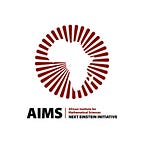The Role of Data Science in Sustainable Development Goals Reporting
The Sustainable Development Goals (SDGs) is the global blueprint that calls on all countries to end poverty, fight inequalities and tackle climate change, while ensuring that no one is left behind. To achieve the targets of the SDGs, Data Science can and will play a large role to develop disaggregated indicators, to ensure that those at risk of disadvantage because of their characteristics, location, or socio-economic status are recognized.
Data Science enables countries to utilize modern methods which includes machine learning and distributed data processing among others to exploit new and alternative data sources. These data sources could include social media, mobile phone data, and data from the Internet of Things. Furthermore, the disaggregated data from these sources is then compiled into summaries of data, typically used for the purposes of public reporting or statistical analysis.
For instance, to promote sustainable industrialization as laid out in SDG 9, small and medium-sized enterprises can use data analytics to improve production; create new goods and services, improve processes and marketing strategies. To respond to some SDG indicators related to sustainable cities and communities (goal 11), climate change (goal 13), and zero hunger (goal 2) for example, it requires utilizing data from mobile phone devices, and satellite imagery data.
In many countries across Africa, much of the existing data from our statistical systems are out-of-date, and too many people are missing from the numbers (disaggregation up to the lower level, disabled people in different some area are not taken into consideration, etc.). Hence the urgent need for more accurate, timely, and comprehensive data to make the SDGs an actionable framework for sustainable development that can drive policies and programs in real time for all people.
National Statistical Offices (NSOs) in all countries are responsible for producing and disseminating official statistics. It is from those statistics that governments get the numbers (data) to report on the SDG indicators. The big questions are, how and when do these statistics get produced? Its take between two to 10 years to produce some of these data and this accounts for the problem of data availability. Some of the challenges the NSOs face are limited resources, efficient data infrastructure, etc.
Surveys, Administrative data, and censuses cannot be only the sources of data in SDG reporting in this century where data is growing faster than ever before. With the increase in storage capabilities and methods of data collection, huge amounts of data have become easily available which need to be discerned systematically by the public agencies to gauge actionable insights in governance processes to the advantage of the citizenry.
By . Emmanuel Christian NYABYENDA/AIMS Alumnus, SDGs and NST Monitoring Statistician — National Institute of Statistics of Rwanda (NISR)
